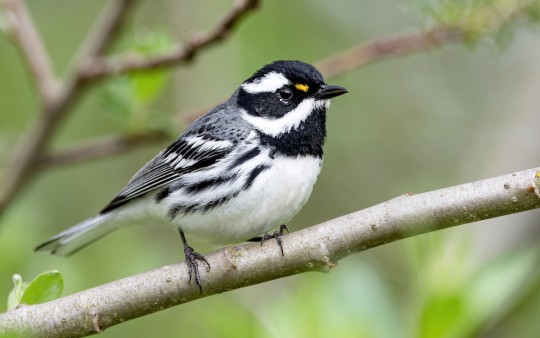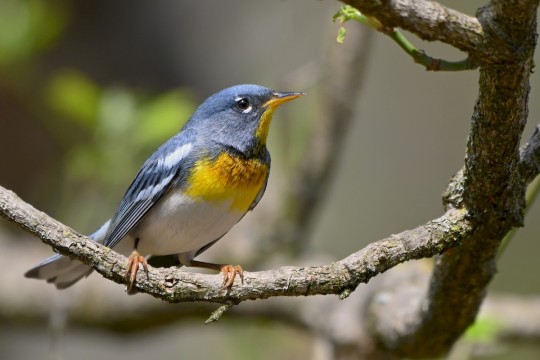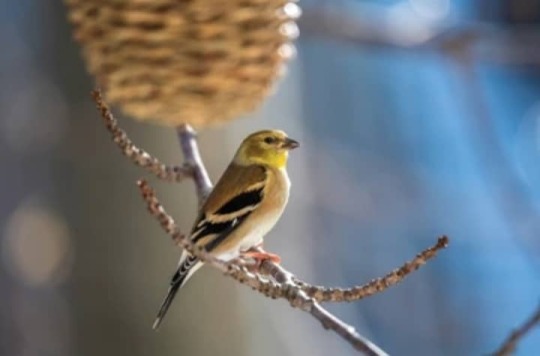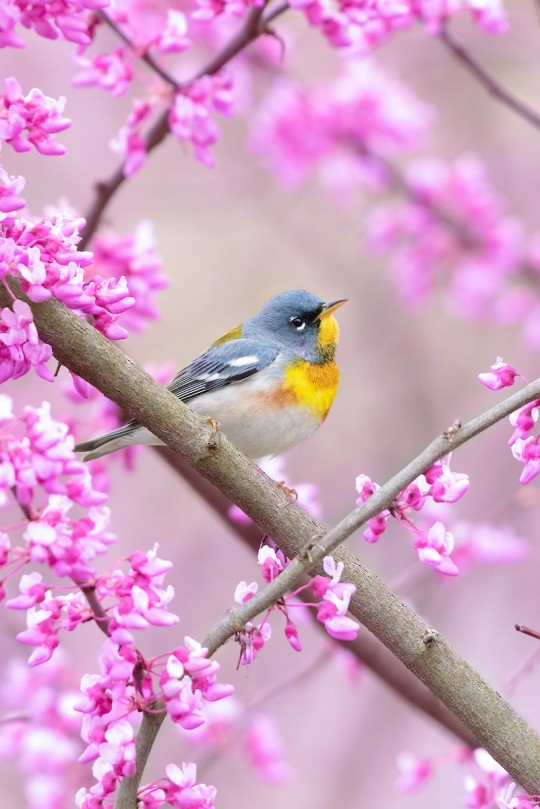#Setophaga americana
Explore tagged Tumblr posts
Photo

Northern Parula (Setophaga americana)
© Matt Felperin
66 notes
·
View notes
Text

Northern Parula (Setophaga americana)
October 6, 2023
John Heinz National Wildlife Preserve, Tinicum, Pennsylvania
#birds#bird#photographers on tumblr#northern parula#birdblr#birb#birbs#ornithology#birblr#nature#animals#Fall migration#Setophaga americana
265 notes
·
View notes
Photo

Northern Parula (Setophaga americana)
© Dan Hayes
43 notes
·
View notes
Text
BOTD: Northern Parula

Photo: Andrew Weitzel
"This small warbler is often hard to see as it forages in dense foliage of the treetops. However, it is easy to hear; the male seems to repeat his buzzy trickle-up song constantly from early spring through mid-summer at least. Northern Parulas hide their nests inside hanging Spanish moss in the South, or in the similar Usnea lichens in the North, where they are impossible to spot except by the actions of the parent birds."
- Audubon Field Guide
#happy birthday to me :)#birds#northern parula#birds of north america#north american birds#warblers#parulas#passerines#birds of the us#birds of canada#birds of mexico#birds of central america#birds of the caribbean#birding#bird watching#birdblr#birblr#bird of the day#Setophaga americana
52 notes
·
View notes
Text



#poll#Class: Aves#Order: Passeriformes#Family: Parulidae#Genus: Setophaga#Setophaga Americana#Range: Nearctic#Range: Neotropical
27 notes
·
View notes
Text

Setophaga americana | Vermivora cyanoptera | Mniotilta varia | Vermivora chrysoptera | Helmitheros vermivorum
Plate XI | Die Nordamerikanische Vogelwelt (1891)
#bird art#bird illustration#vintage art#vintage illustration#artists on tumblr#parulidae#new world warblers#setophaga americana#northern parula#vermivora cyanoptera#blue winged warbler#mniotilta varia#black and white warbler#vermivora chrysoptera#golden winged warbler#helmitheros vermivorum#worm eating warbler#gustav mützel
16 notes
·
View notes
Text

Northern Parula
106 notes
·
View notes
Text
Warbler Showdown; Bracket 2, Poll 9


Black-throated Gray Warbler (Setophaga nigrescens)
IUCN Rating: Least Concern
Range: typically breeds west of the Rockies, from lower British Columbia to the very northern edge of Mexico (mostly there in Baja California). Overwinters in Baja California Sur, as well as the Pacific slope of Mexico, sometimes along the interior of the country as well.
Habitat: found in open coniferous or mixed coniferous-deciduous woodlands with brushy undergrowth, as well as pinyon-juniper and pine-oak; this is true for breeding, migration, and winter habitats.
Northern Parula (Setophaga americana)
IUCN Rating: Least Concern
Range: breeds from southeast Manitoba to southern Quebec, as well as a heavy portion of Mid-Atlantic and Southern States. The extirpation (local extinction) of this species from the middle band of its range (the northern Midwest) is likely due to air pollution decimating the mosses which it uses to build its nest. Overwinters in Florida, heavily in the Caribbean, as well as the Yucatan and southern Mexico.
Habitat: breeds in mature, riparian ('riverside') forests with epiphytic growth. In winter, this bird is the complete opposite, becoming a habitat generalist across areas such as fields, pastures, scrub, dry to wet forests, croplands, and even commercial plantations.
Image Sources: BTYW (Mason Maron); Parula (Mollie Langdon)
#NWW Showdown#black throated gray warbler#northern parula#setophaga#parulidae#animal poll#bird poll#this is literally the setophaga poll and I *still* almost typed 'parula americana'
16 notes
·
View notes
Text

Northern Parula (Setophaga americana), Brazos Bend State Park, Fort Bend County, Texas.
610 notes
·
View notes
Text

Northern Parula (Setophaga americana)
Wakulla County, Florida, USA
160 notes
·
View notes
Text





Another day at bird banding
Mourning Dove (Zenaida macroura)
Palm Warbler (Setophaga palmarum)
Eastern Phoebe (Sayornis phoebe)
Brown Creeper (Certhia americana)
White-throated Sparrow (Zonotrichia albicollis)
October 15, 2024
Southeastern Pennsylvania
All birds were handled and banded for research purposes under state and federal permits
#bird#birds#photographers on tumblr#mourning dove#palm warbler#eastern phoebe#brown creeper#white throated sparrow#birb#birdblr#birbs#ornithology#birblr#nature#animals#wildlife photography
720 notes
·
View notes
Text

Northern Parula by Richard Laeton - Balaram
The Northern Parula (Setophaga americana) is a small songbird belonging to the wood-warbler family. It’s known for its bright plumage, yellow throat patch, and distinctive song. This bird has captured the attention of many due to its unique appearance and behavior.
Symbolism in Spirituality
The Northern Parula is also seen as a symbol of spiritual growth and transformation. It represents personal development and self-improvement in various spiritual practices.
Northern Parula as a Symbol of Personal Growth: Its journey from winter to summer plumage signifies personal growth and change.
Northern Parula as a Symbol of Nature’s Cycle: The bird’s migration journey symbolizes the cyclical nature of life, reminding us of nature’s cycles.
The Northern Parula is a fascinating creature with deep symbolic meanings across different cultures. Its vibrant colors and migration journey make it an iconic figure in various belief systems. It represents renewal, growth, transformation, balance, and harmony. The bird’s presence serves as a reminder of the interconnectedness of all living beings and the cyclical nature of life. As we learn from its symbolism, we can appreciate nature’s beauty and our role in preserving it.
12 notes
·
View notes
Text
[CM] Birds - Biyaw 1
How are we already to our second-last bird post? Holy cow, these are flying by! Today we’ve got the first half of biyaw* species - birds that are hunted often and easily by the Clan. This is the longest list by far, as ClayClan considers most birds to be fair game.
Below are translations for two ducks, warblers, and... a ton more!
Bufflehead (Bucephala albeola) - Mwek Small big-headed duck; females are black-and-white, males are largely white with glossy head feathers. Present in winter, spring, and fall. Have the same diet as mallards. The first time I saw buffleheads, they were on a pond in Missouri just after New Year’s - they’re cute little fellows! Hey, didn’t we see this before? I moved buffleheads from eyawoon* to biyaw* after posting the eyawoon* list - woops! They’ll be here from now on.
Green-winged teal (Anas carolinensis) - Hapwip Small duck with dark brown and green markings on the head. Present year-round but most common in spring and fall. Feed on various grasses, insects, molluscs, that sort of thing.
Yellow-billed cuckoo (Coccyzus americanus) - Oo’oo Medium-sized bird with clean brown-and-white feathers and a curved yellow beak. Present in summer and fall. Feed on insects (notably caterpillars and cicadas), eggs, snails, small reptiles, and fruit.
Sora (Porzana carolina) - Kipipip Small chickenlike rail with brown-and-gray feathers and a bright yellow bill. Present in summer and fall, but more common in summer. Feed on seeds, insects, and snails.
American goldfinch (Spinus tristis) - Assuassu Handsome yellow birds - males have clean black wings and foreheads, females are duller overall. Abundant year-round. Feed on seeds. Goldfinches are one of my favorite species - I plan to get a tattoo of one!
Rusty blackbird (Euphagus carolinus) - Shashwee Blackbird with seasonal coloration; in winter, males and females are mottled black-and-brown, but in spring breeding males develop crisp black feathers. Present year-round, but most common in spring and fall. Feed on insects, small aquatic animals, seeds, and sometimes other birds.
Common grackle (Quiscalus quiscula) - Chup Big blackbird with glossy black feathers, females being duller, and white eyes. Present year-round but most abundant in spring and early summer, falling in numbers as the year goes on. Feed on numerous things; insects, frogs, minnows, lizards, and eggs.
Yellow warbler (Setophaga petechia) - Swee’k’k Small yellow bird, males having reddish breast streaks. Present in early summer through fall. Feed mostly on insects.
Black-and-white warbler (Mniotilta varia) - Eekeek Very distinct mottled black-and-white bird. Present in summer and fall. Feed on insects.
Palm warbler (Setophaga palmarum) - Swee Unique warbler with a colorful face and duller body. Present in spring and summer. Feed on insects. Unlike other warblers, palm warblers spend much of their time foraging on the ground.
Yellow-rumped warbler (Setophaga coronata) - Pfswee Distinct gray-and-black bird with white spots on the forehead and flanks. Present year-round, but abundant in summer and fall. Feed on insects and fruit. Like some other birds, yellow-rumped warblers display different coloration based on their location - “myrtle” warblers are the ones present on ClayClan territory, but there’s also the striking black-and-yellow “Goldman’s” down south!
Northern parula (Setophaga americana) - Rreep Blue, yellow, and white warbler. Present in summer and fall. Feed on insects. Parulas nest on hanging mosses and lichens high in the tree canopy, so their eggs are rarely encountered by Clan cats.
Common yellowthroat (Geothlypis trichas) - Wishywee Yellow-and-tan warbler, males with a striking black mask over their eyes. Present in summer and fall. Feed mostly on insects. Wishywee is another one of my favorite words :]
2 notes
·
View notes
Text
Yellow Birds in Ohio: A Guide to the State's Bright Avian Species
American Goldfinch (Spinus tristis) Yellow Warbler (Setophaga petechia) Prothonotary Warbler (Protonotaria citrea) Common Yellowthroat (Geothlypis trichas) Yellow-bellied Sapsucker (Sphyrapicus various) Eastern Meadowlark (Sturnella magna) Northern Parula (Setophaga Americana) Pine Warbler (Setophaga pinus) Orchard Oriole (Icterus spurius) Wilson’s Warbler (Cardellina pusilla) ImageBird…

View On WordPress
0 notes
Photo

Northern Parula (Setophaga americana)
© Tyler Ficker
162 notes
·
View notes
